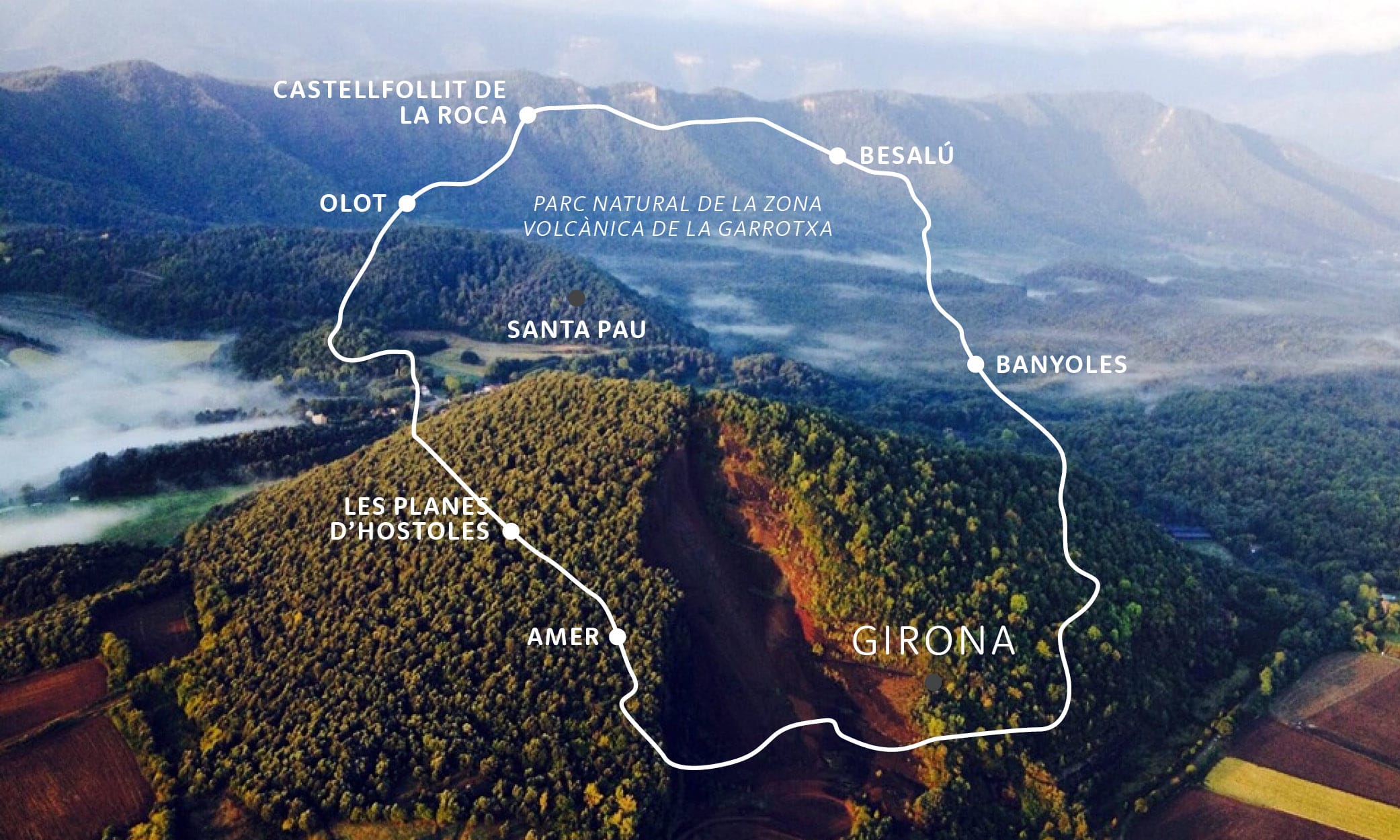
With the Costa Brava being as beautiful as it is, one could almost be forgiven for forgetting all about the interior of Girona Province. Almost, but not quite! The Ruta dels Volcans – Volcano Route – is a fairly short drive away and makes for a lovely day trip or, even better, a weekend getaway.
A perfect weekend getaway
We have written other articles about the best Costa Brava beaches, medieval villages, cool castles, coastal walking trails, and highlights of the Baix Empordà in general. This time, we’re heading into the interior a little to explore what is known as the Ruta dels Volcans. (No need for a translation there, we don’t think!)
You could feasibly manage to do this as a day trip from most parts of the Costa Brava if you start early enough, but we felt we’d get more out of it with an overnight stay in Olot – and we were right! The Volcano Route makes for a perfect weekend break.
Ruta dels Volcans
The full title given to the circuitous Volcano Route is actually the Ruta dels Volcans i l’Estany, the “Volcano and Lake Route”, “estany” being the Catalan word for “lake”. The first stop out of Girona city – if you are heading in a counter-clockwise direction – is the town of Banyoles with its spectacular lake. (Yes, of course, you can do the route in a clockwise direction if you prefer!)
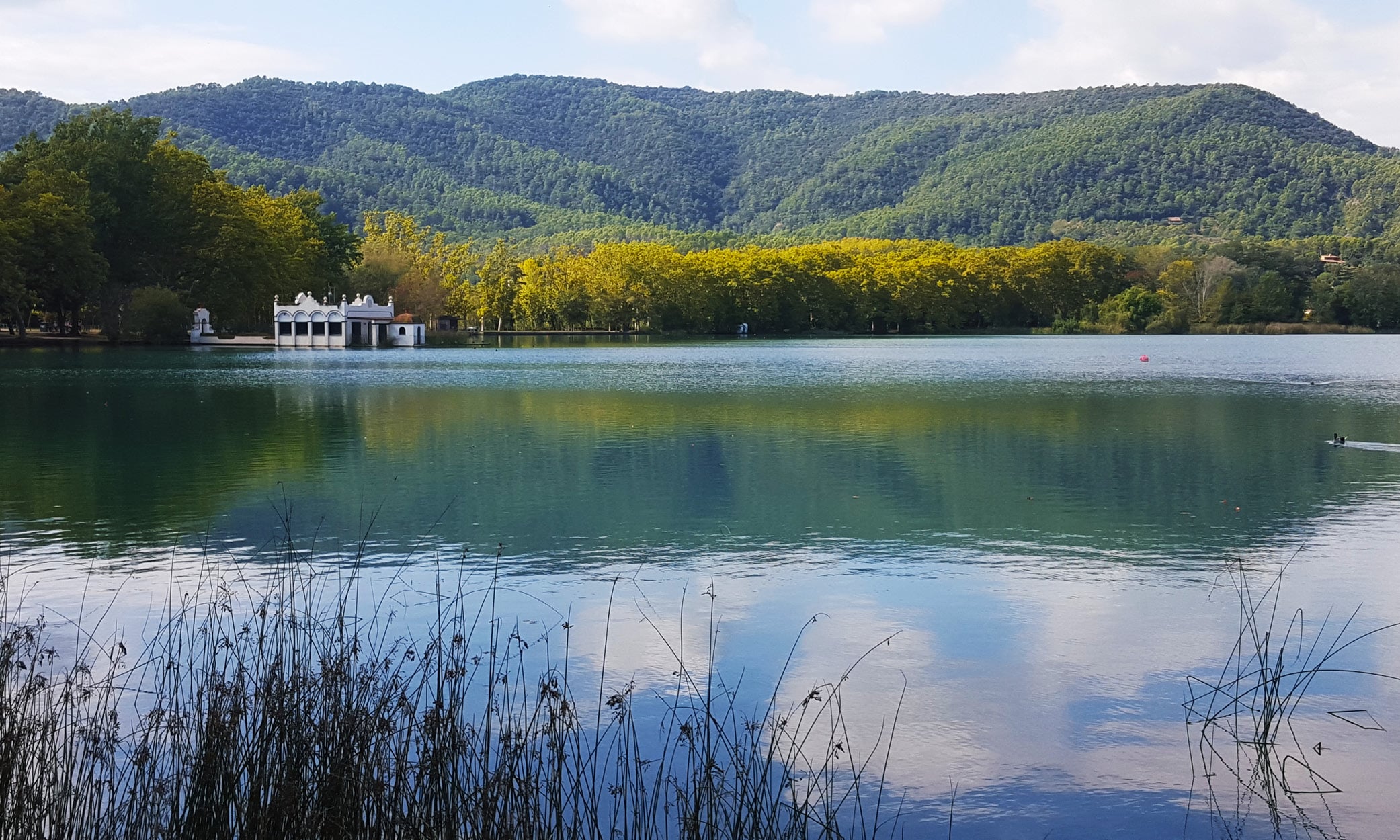
Banyoles
The town of Banyoles is situated on the eastern shore of the lake bearing the same name (spelt Bañolas in Castellano). It is the capital of the Pla de l’Estany region, which means “Plain of the Lake”, the lake in question being that of Banyoles, obviously. It is one of the highest-ranked municipalities in all of Spain in terms of standard of living, but it is mostly known for its natural lake, the second largest in Catalunya, and the beautiful surrounding countryside.
The lake measures about 2150 metres in length, over 770 metres at its widest part and 40-45 metres at its deepest, and its surface area covers 112 hectares. Lake Banyoles hosted the rowing events in the 1992 Barcelona Summer Olympic Games. Later, in 2004, it also hosted the World Rowing Championships and in 2009 the first ever Rowing World Cup. Apart from rowing, it is also a highly valued environmental ecosystem and is a protected Natural Area.
We decided it would be rude not to walk around the entire lake to take it in from all angles. The walk should take just over an hour, but be sure to factor in extra time for taking lots of photos of the scenery and, if you’re lucky, some of the wildlife.
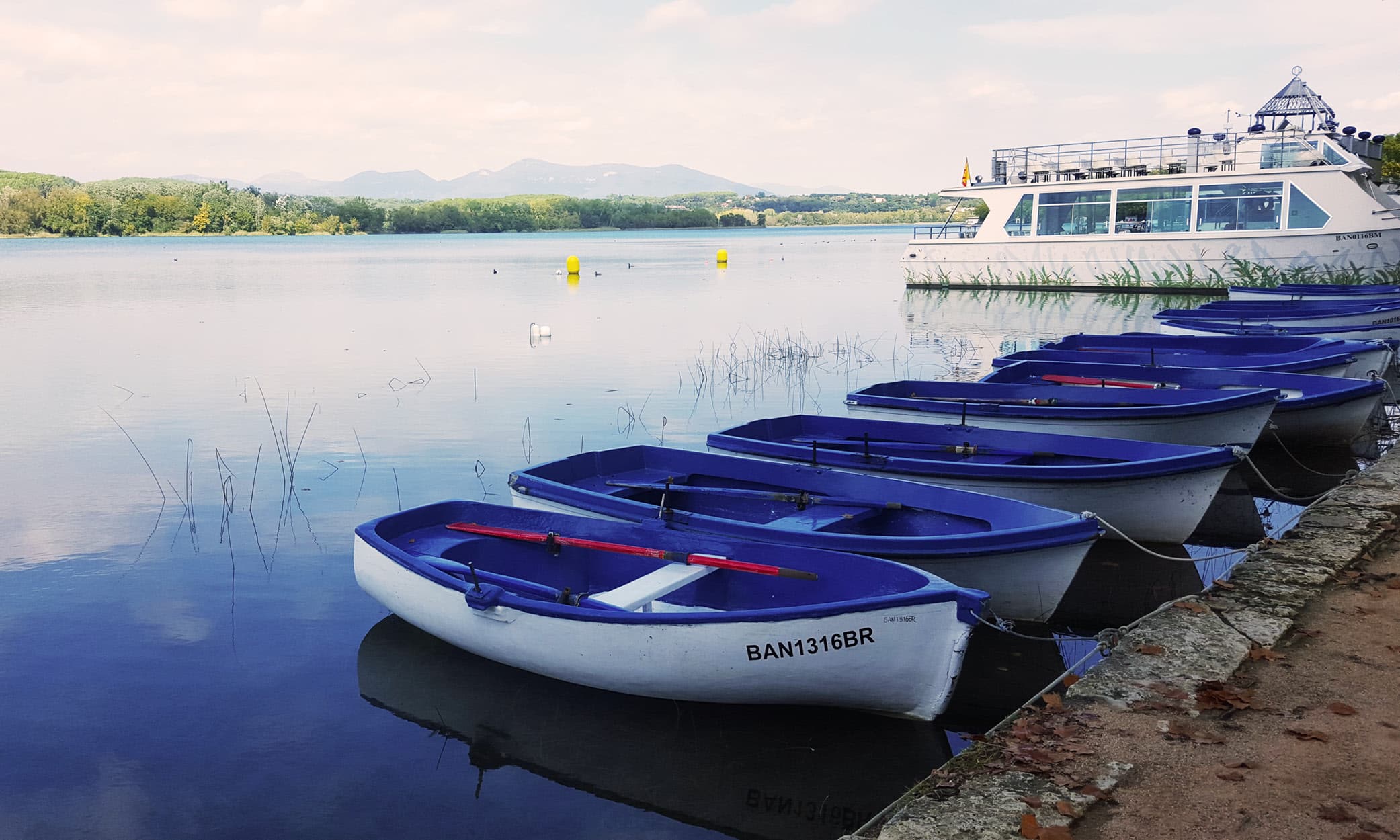
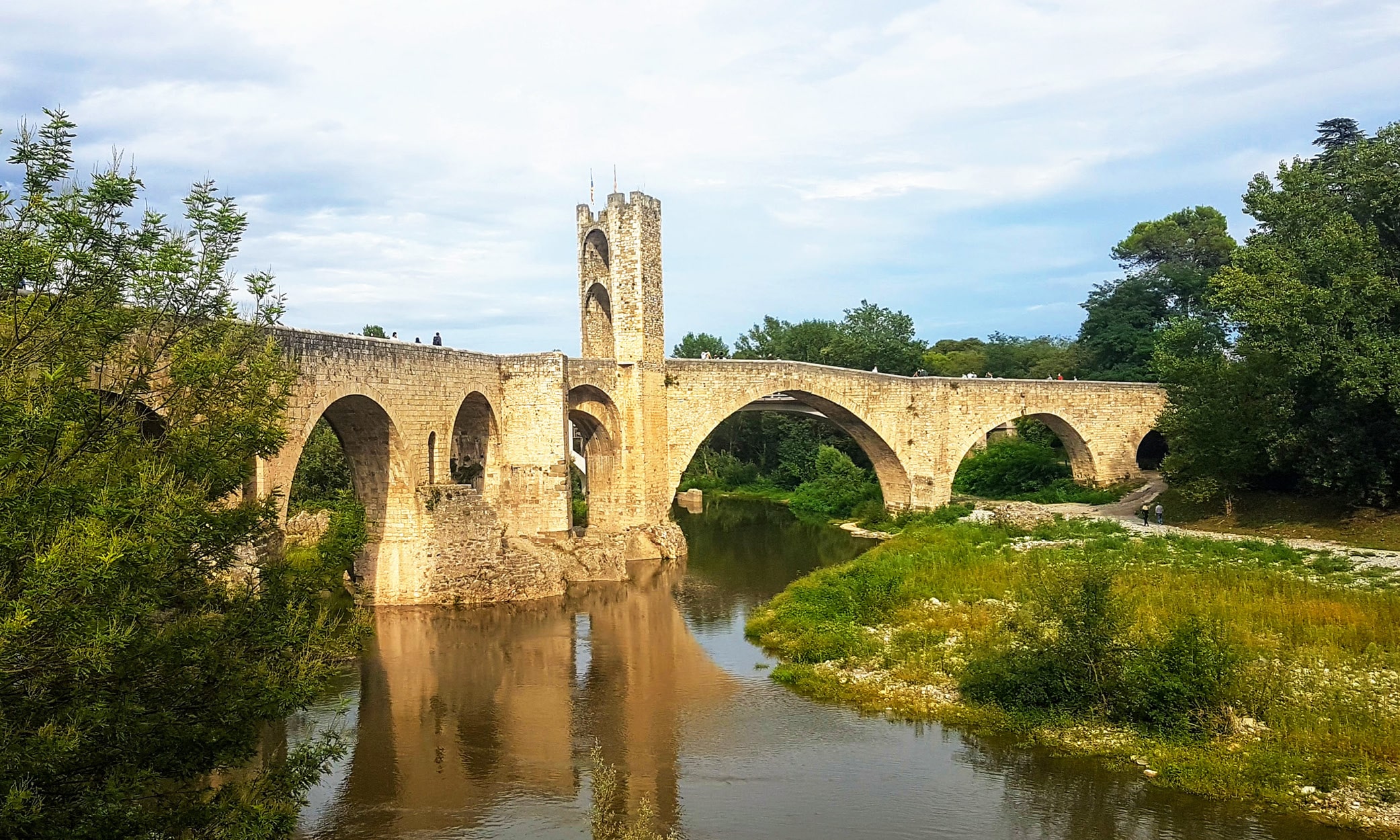
Besalú
As we left Banyoles and headed into the area known as La Garrotxa, our next stop was the medieval village of Besalú. The origins of the town go back to the Castle of Besalú, the existence of which was already documented as far back as the 10th century, and its ancient city walls, which date back to the 12th century. Although most of the original castle is no longer there, the layout of the town and its architecture are straight out of medieval times.
The most emblematic structure is undoubtedly the bridge, with its seven arches and two towers. Inside the old town, you’ll find the old Jewish quarter with its narrow streets, synagogue and purification baths, as well as a monastery and a church, making Besalú one of the best-preserved examples of a medieval Catalan town in the entire region.
If you happen to visit Besalú around the end of November, keep an eye out for the Fira de Ratafia! It’s one of the most important ratafia fairs in Catalunya, where local producers submit their best homemade offerings to a panel of judges in the hope of taking home the coveted top prize. It might be a good idea to plan to stay in town for the night though!
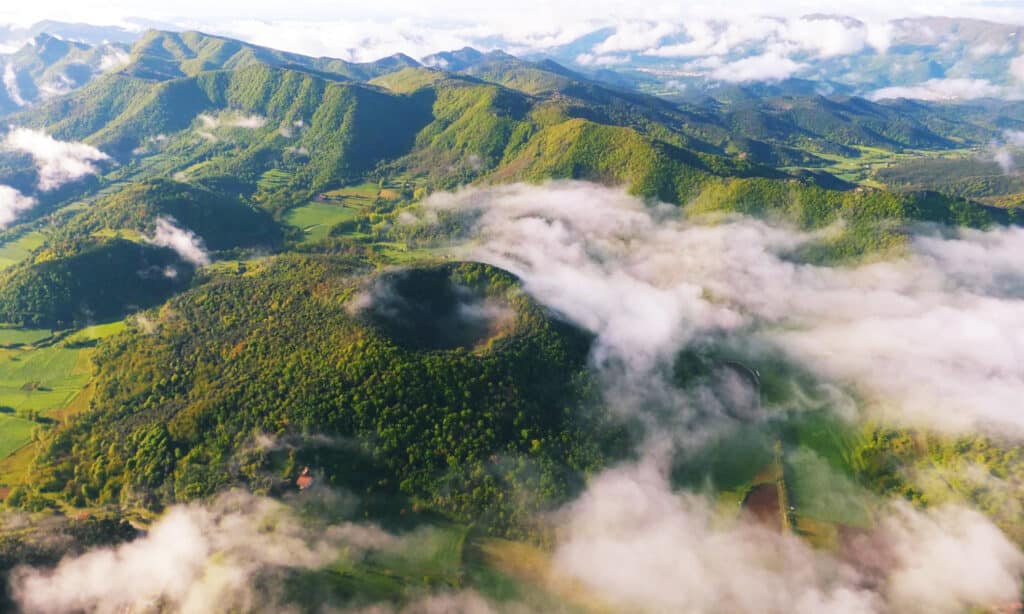
La Garrotxa
The rest of the Ruta dels Volcans lies within the Parc Natural de la Zona Volcánica de La Garrotxa, considered to be the best example of a volcanic landscape in the entire Iberian peninsula. It became a Natural Park in 1985 and contains over 40 volcanic cones, many hidden in deep forest and some very well-preserved, as well as ten craters and over 20 lava flows ranging in age from 10,000 to 700,000 years old. The area is no longer volcanically active, and the last eruption occurred approximately 11,000 years ago.
The lush and varied vegetation includes a number of different species of oak and beech that thrive in the fertile volcanic soil, adding further to the natural beauty of the area, 15,000 hectares of which is protected. The climate is closer to the Atlantic than the Mediterranean and, as the local saying goes: “If it’s not raining in Olot, it’s not raining anywhere!”.
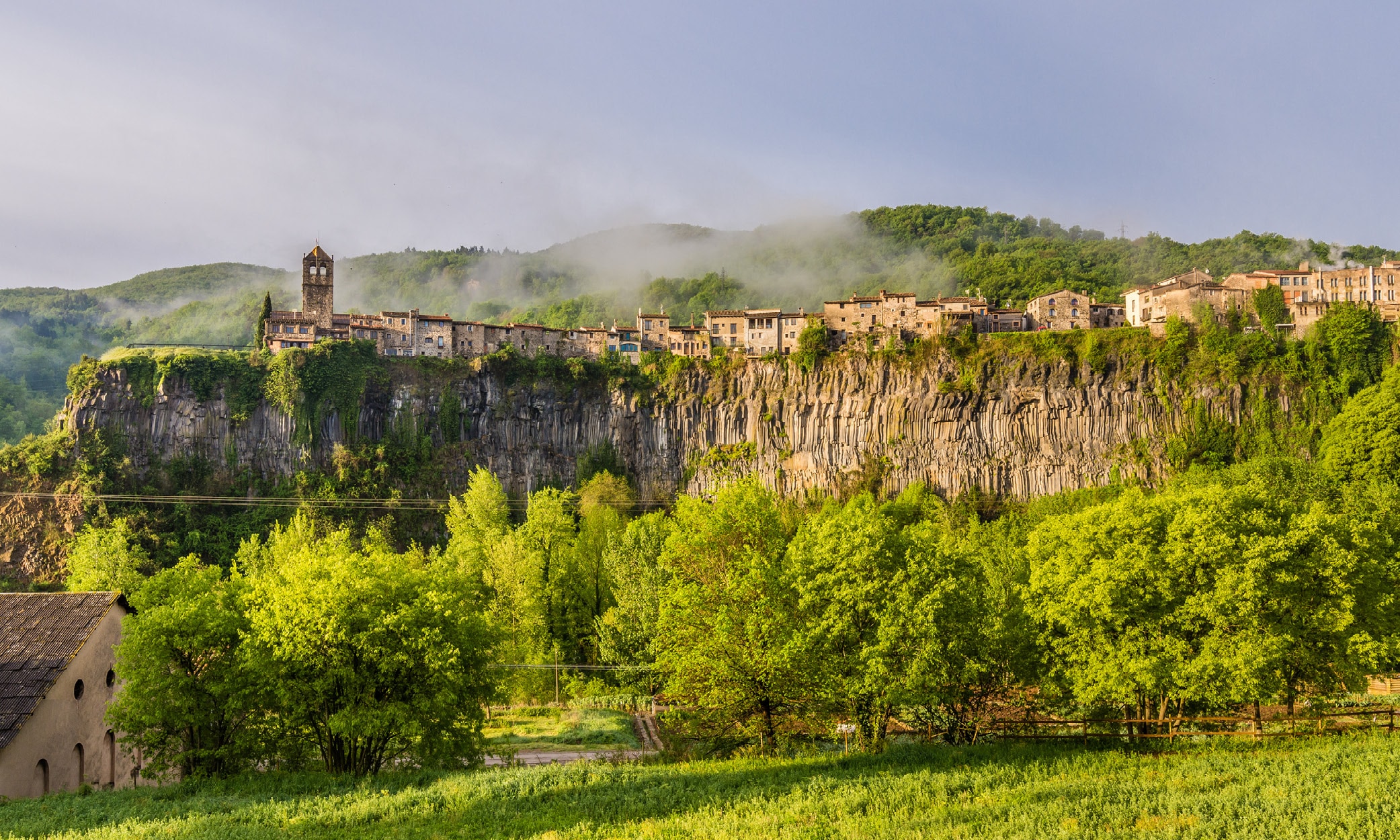
Castellfollit de la Roca
On the road from Besalú to Olot, you pass the village of Castellfollit de la Roca. Covering an area of just 1km², it is the second smallest municipality in Catalunya and the smallest in Girona. It has a basalt quarry that has been in operation since 1929 and is the only one still active in Spain.
What really makes this town interesting, though, is its location, perched atop a 50m high promontory-like basalt cliff that was created by two separate lava flows many millennia ago. The first was 217,000 years ago and came from Batet de la Serra, at Olot, while the second occurred 192,000 years ago as a result of the eruption of the San Juan les Fonts volcanoes. If you stop in the village be sure to check out the mirador beside the old church for bird’s eye views of the countryside below.
In case the views alone aren’t incentive enough to make a stop at the mirador, there also happens to be a craft brewery with a tap room called Poch’s just a few metres away! The bar itself is only open on Friday and Saturday evenings, and sometimes beers can only be bought to take away, although hours seem to vary in the summer. It was formerly a leather factory and is about as rustic as they come, and the beers are top-notch!
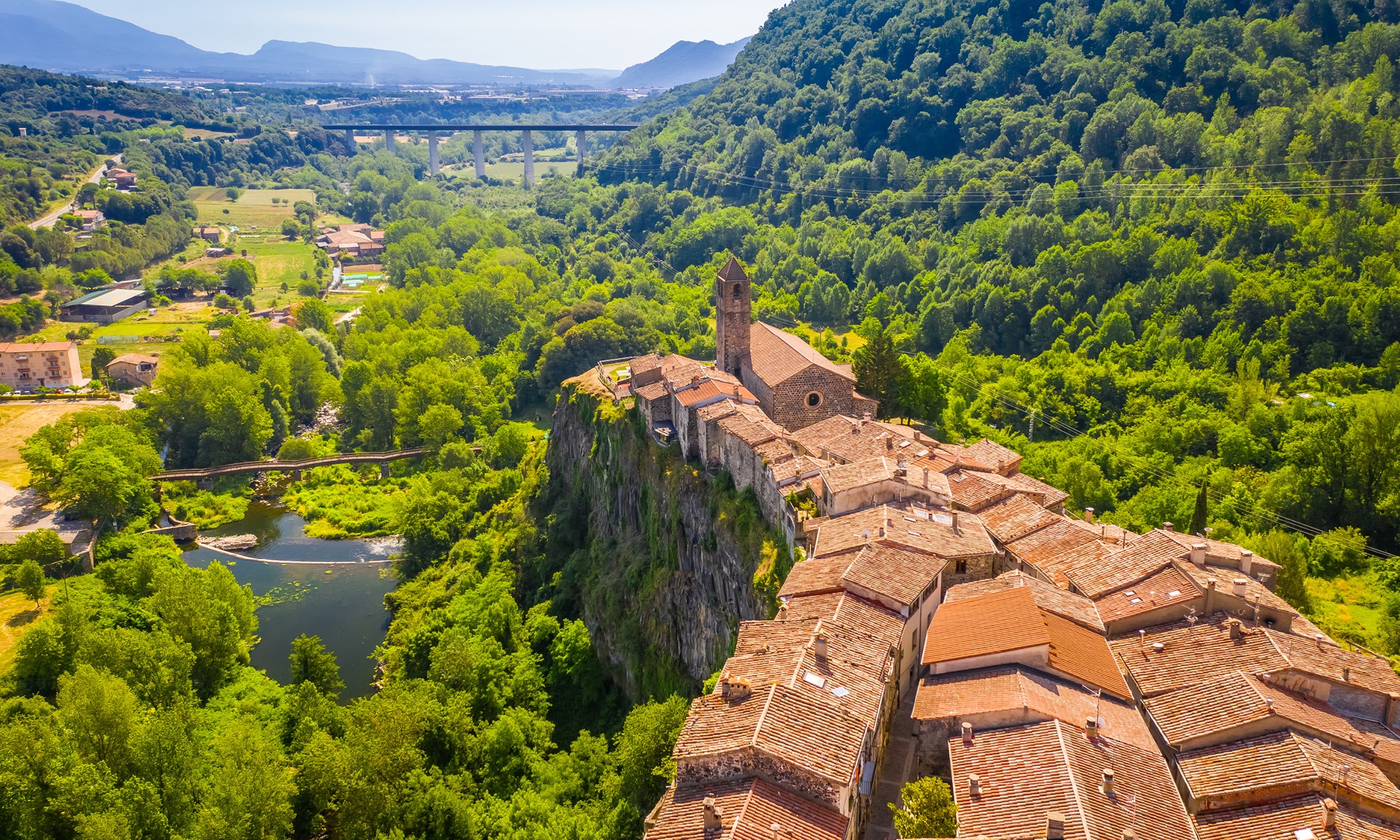
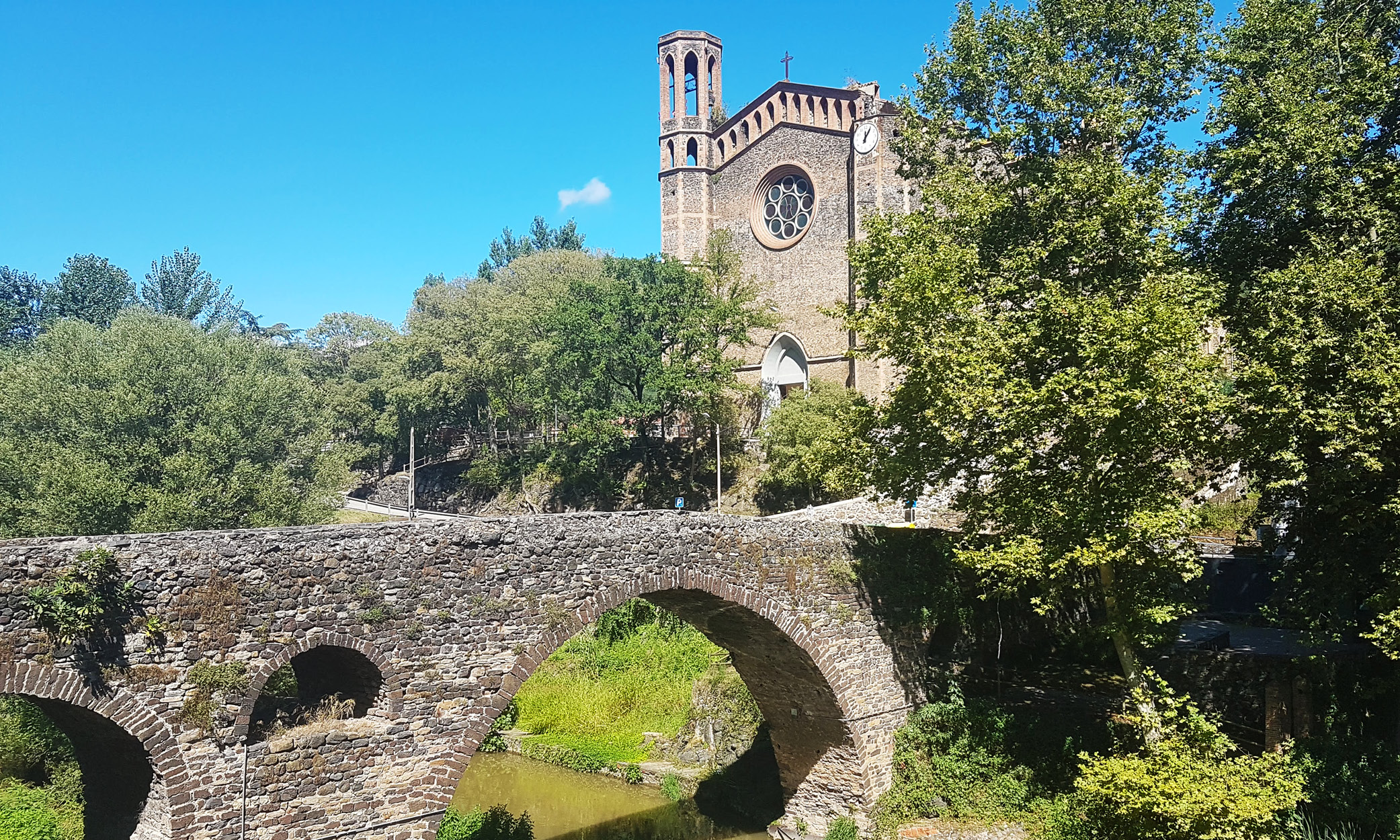
Sant Joan les Fonts
Just before arriving into Olot, it’s worth making a brief stop in the village of Sant Joan les Fonts to snap a few quick photos of its towering 19th-century church just on the other side of a short bridge over the River Fluvià. A couple of hundred metres further along the river is the small medieval castle of Estada Juvinyà, built between the 12th and 14th centuries.
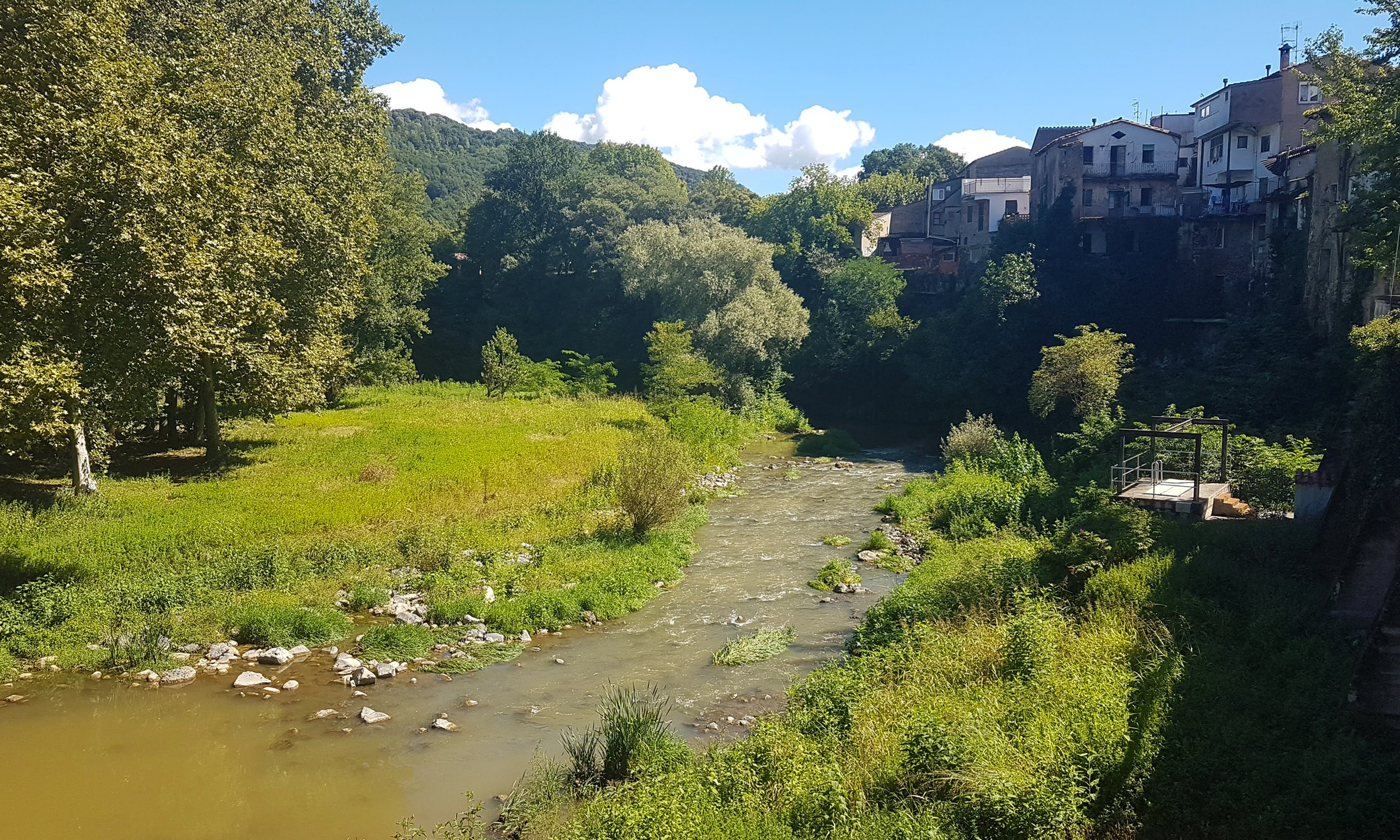
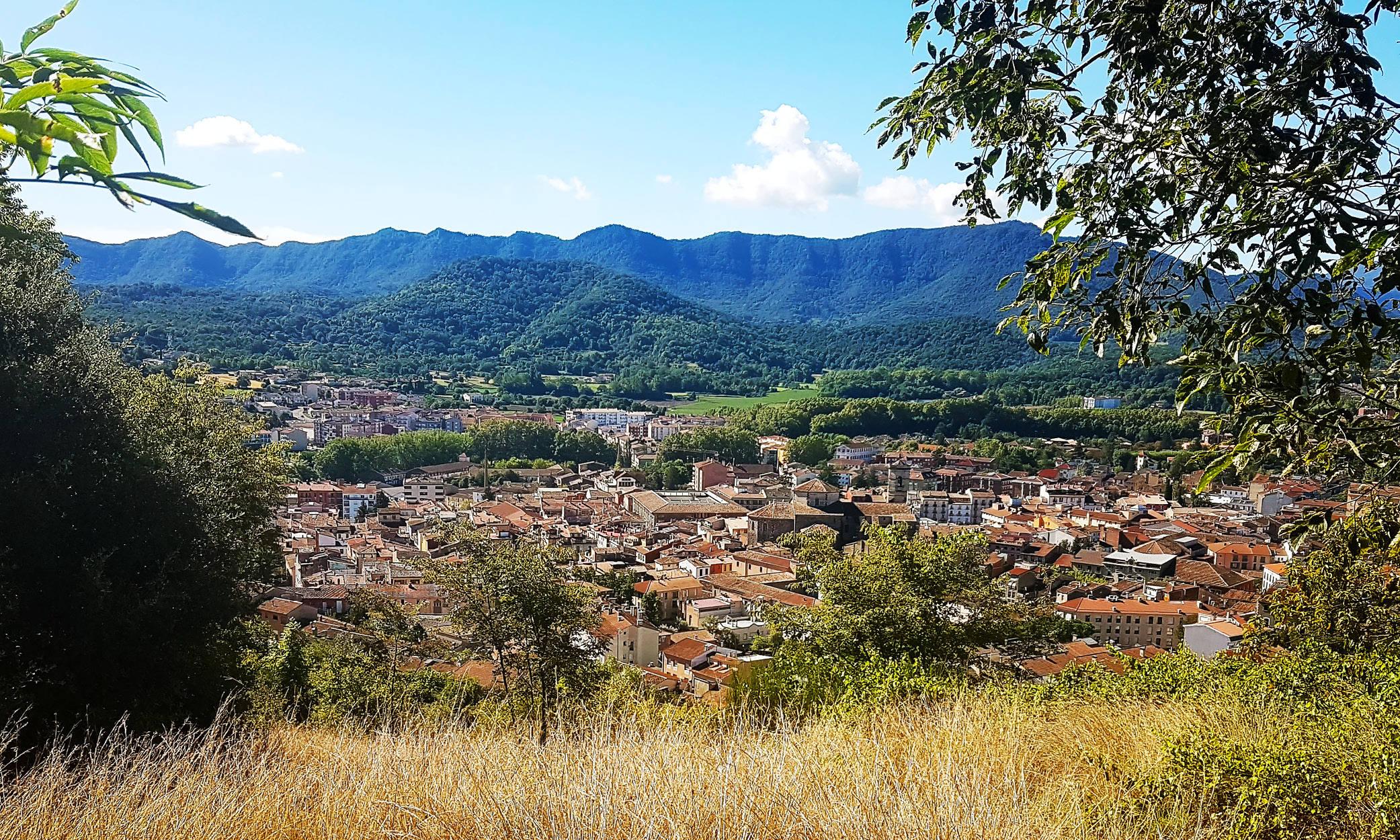
Olot
We had driven through the town of Olot once or twice before without being too impressed by its character or appearance. On this occasion, we were stopping for the night to give it a proper chance to impress – and we’re glad we did! As is often the case with many smaller towns in this country (unfortunately), the old town is hidden behind a lot of modern, ugly architecture surrounding it. (Sometimes, one gets the impression that the architectural design job for the newer parts of many Spanish towns was given to a class of 6-year-olds in primary school!)
Right at the heart of the town is the impressive Church of Sant Esteve (St Stephen) and, right next to it, Olot’s version of Las Ramblas; the Passeig de l’Escultor Miquel Blay with lots of traffic-free outdoor terraces for some top-quality people-watching. To the other side of the church is a cluster of old, narrow streets full of small shops that bring you to Plaça Mayor, with more cafés and terraces.
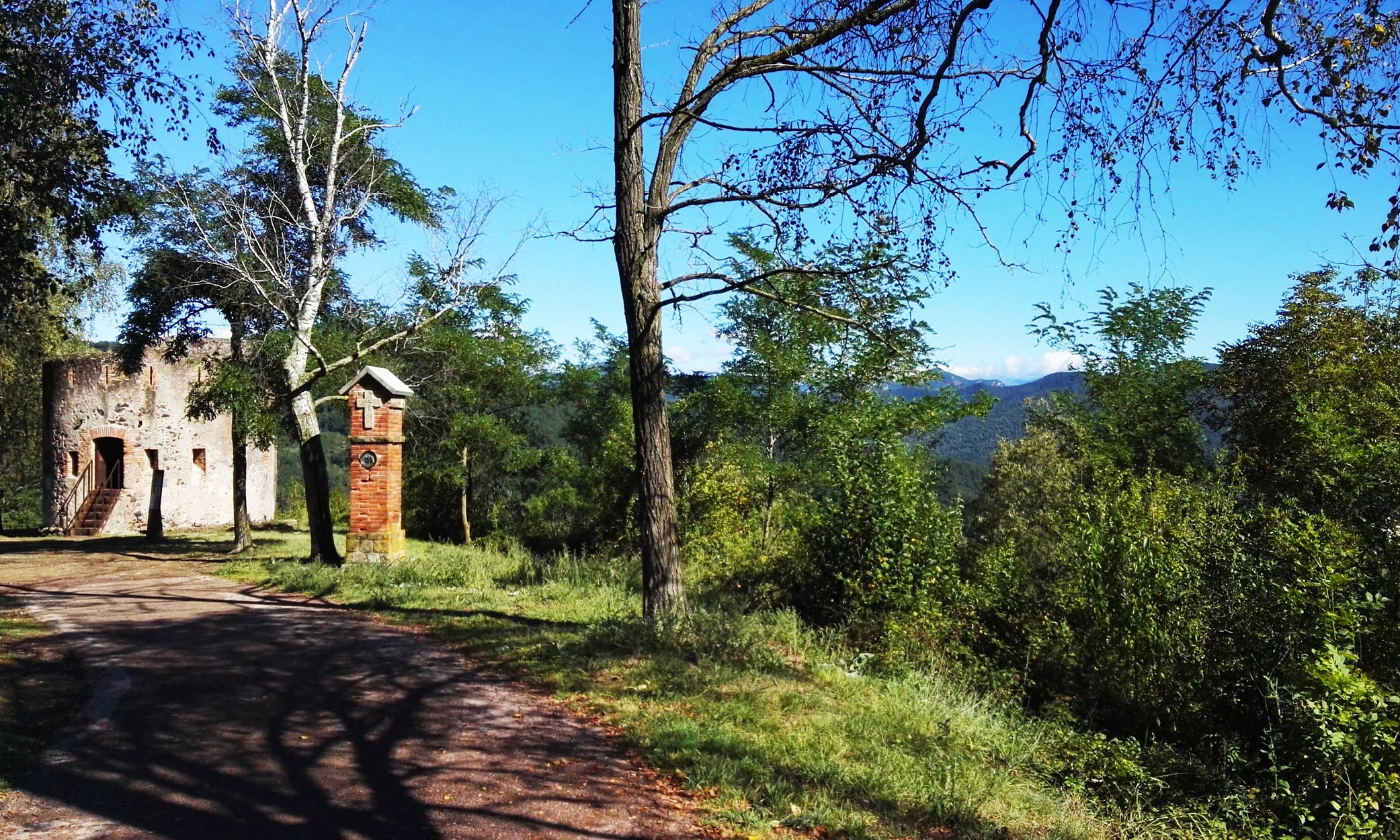
Also in this part of town, just off Plaça Major, is to be found an absolute delight for craft beer lovers! Tucked away on a corner is Cerveses El Bouquet Craft Beer bar. If you enjoy trying new beers, this place is an absolute must! The beers on tap are rotated, and when one keg runs dry, another new brew takes its place – just keep an eye on the chalkboard! They also have a range of unusual beers in bottles and cans, and the owners are extremely friendly and knowledgeable, which is a help, as you probably won’t have come across most of their beers before!
If you’re lucky enough to be in town on the right weekend in April, you might just catch the annual Olot Craft Beer Fair. The aforementioned El Bouquet and a handful of other bars in town all participate, with brewers and beer experts there to explain their brews. There are about half a dozen food trucks and live music performances.
Also in Olot in November there is Lluèrnia, Festival of Fire and Light, which draws on the relationship between the city of Olot and its volcanic surroundings “with spectacular projection and lighting technology with the participation of visual artists, sculptors, architects, and lighting designers, all with the collaboration of institutes, schools, and other local entities”.
Despite the local saying about the rain, we woke up to a beautiful blue sky, which was just as well because Day 2 was all about nature. First thing in the morning (well, second thing – after breakfast!), we walked about 15 minutes up the hill behind our hostal to the crater of Volcan Montsacopa, complete with two 19th-century former defensive watchtowers offering 360º vistas far into the distance. Not a bad start to the day!
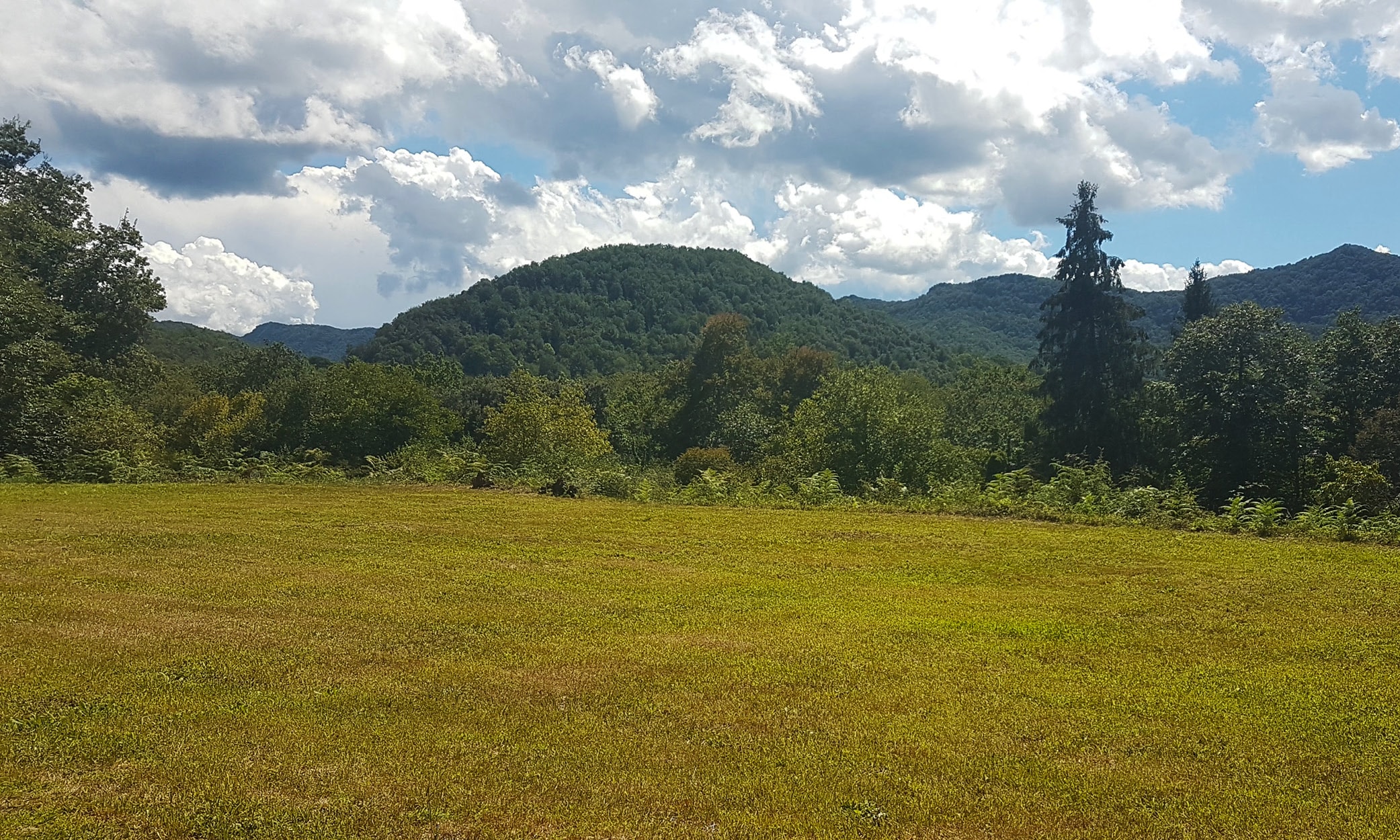
La Fageda d’en Jordà
Leaving Olot and breaking away slightly from our circuit route, we drove the short distance SE from Olot to where the lush beech, oak and chestnut forest of La Fageda d’en Jordà grows out of the rich and fertile volcanic soil of what was once a lava flow, a very long time ago. The best option here is to leave the car in one of the car parks, which are either free or very cheap.
At Parking de La Fageda d’en Jordà and P&Y Parking, there are information points where you can check out the different walking trails available and decide which volcanoes you want to see. There is also the Santa Margarida Parking a little further along the same road out of Olot, but you’ll want to pick up a map beforehand. Whichever trail you choose, it’s a forest walk with a difference!
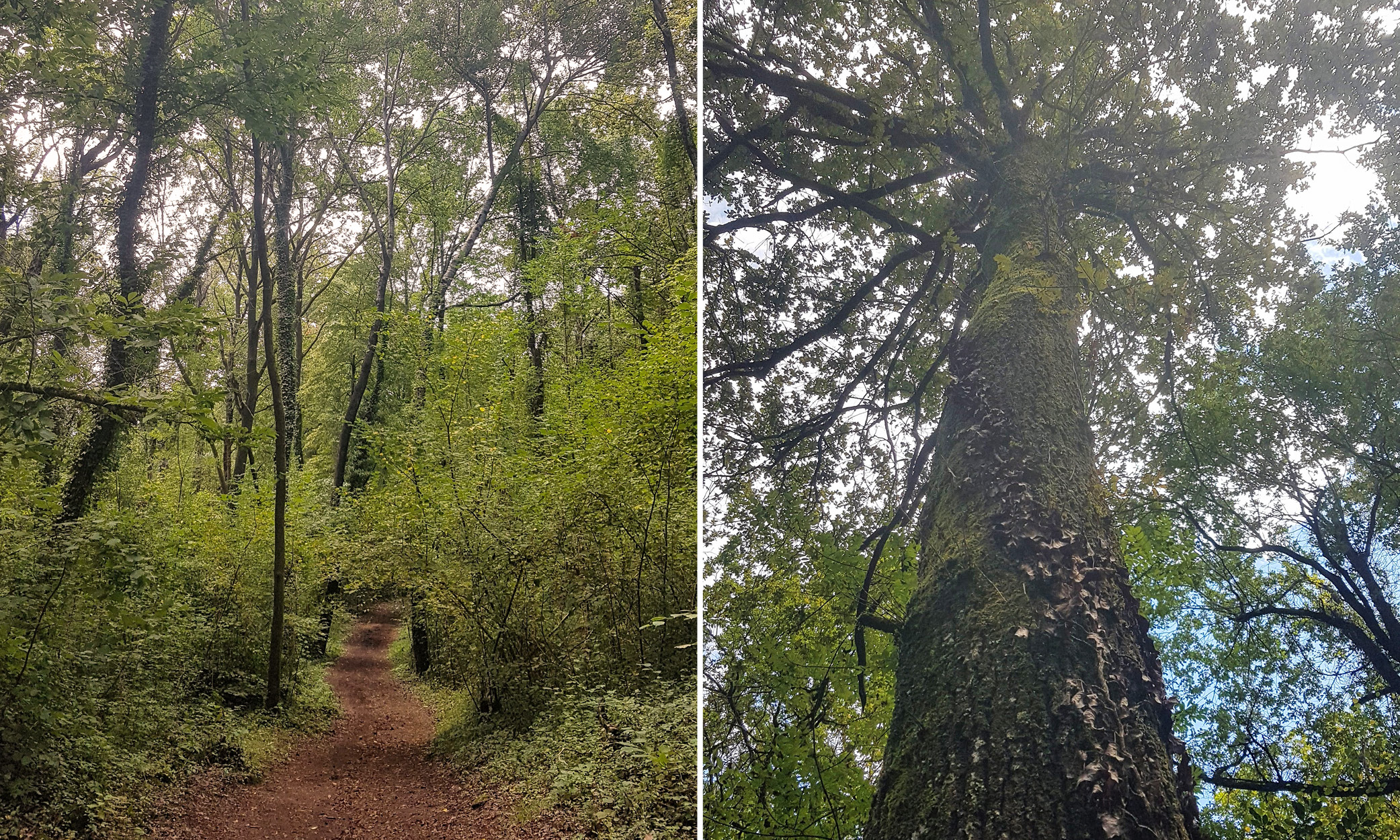
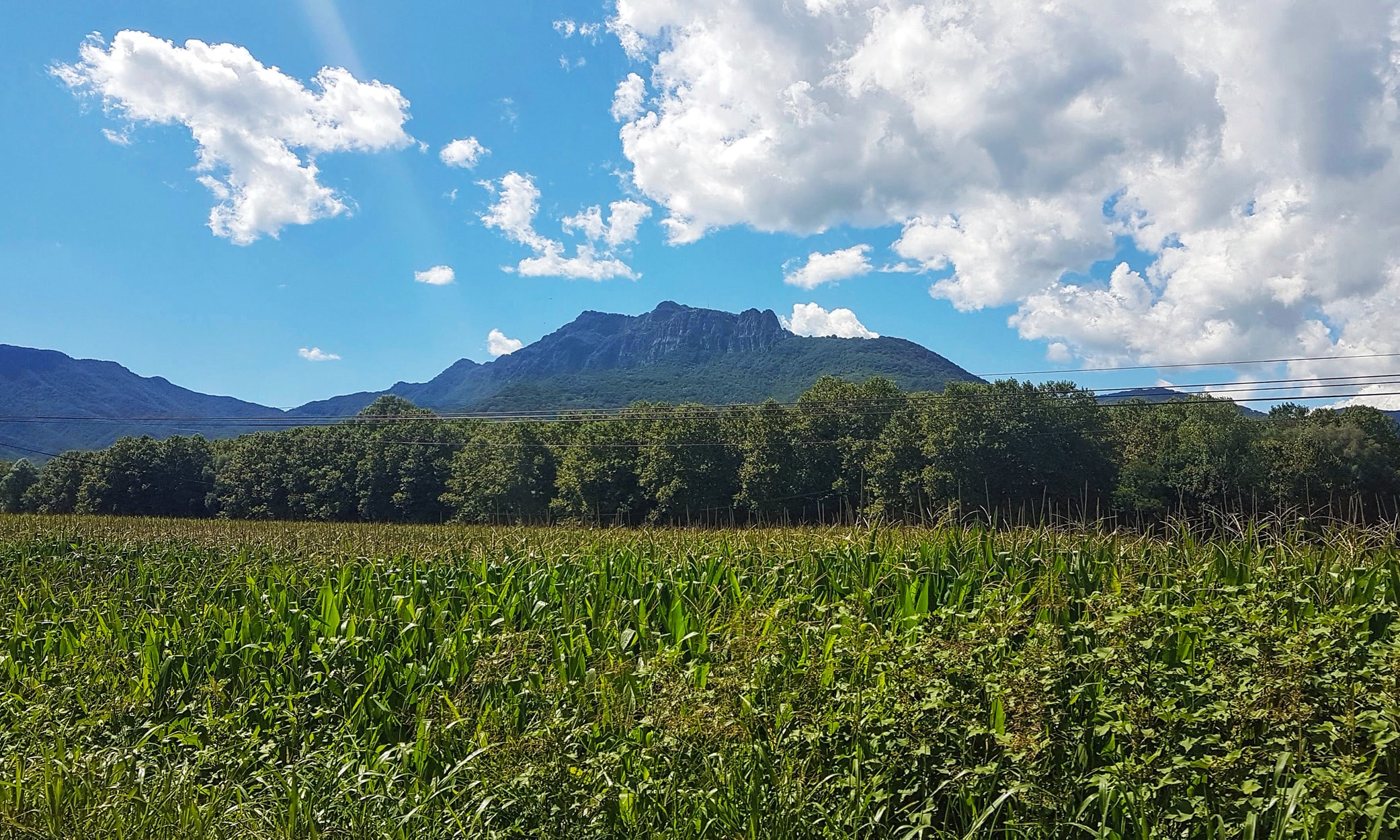
The Gorges of les Planes d’Hostoles
Rejoining our Ruta del Volcans circuit just south of Olot, we made our way to our last stop of our weekend break: the beautiful gorges of Les Planes d’Hostoles. Keep a close eye out for the parking lot on your left as you come into town. It’s not that it’s hidden exactly, but neither is it very well signposted. We missed it first time!
As this is a protected area, the number of visits allowed to the gorges per day is limited, particularly at certain times of year. For example, during Easter Week, weekends and holidays between Easter and St. Joan (24 June), and then every day until 11 September, and weekends and public holidays until 1 November, reservations are required. The cost is only €3 per adult (children are free) so it is well worth a little advance planning to avoid disappointment.
The waterfalls and the pools they created are an important natural habitat for various species of aquatic animals and plants, especially in dry periods when other waters dry up. In total, there are four different gorges that can be visited, and your €3 covers all four.
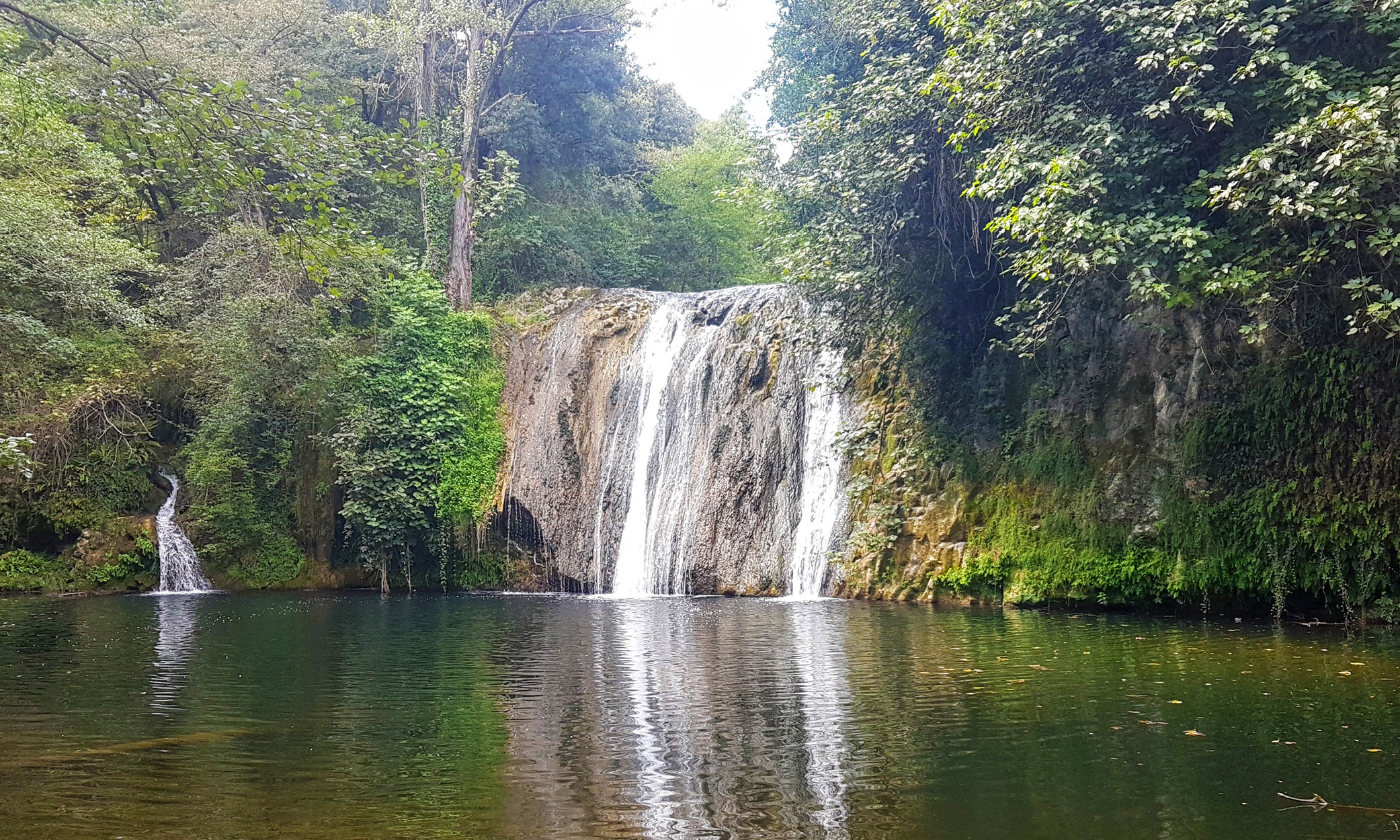
And so we left the beautiful Garrotxa region and headed back towards Girona to conclude the beautiful Ruta dels Volcans i L’Estany, and onwards back to the Costa Brava.
As mentioned at the start, the route could be done in one day if, for example, you don’t do the walk around the lake in Banyoles, or maybe you might skip the forest volcano walk instead. Overall, though, we reckon it’s better to make the overnight stop in Olot and check out the town – and have a few craft beers too, naturally! Whatever way you decide to do it though, we’re pretty sure you’ll enjoy every bit of the Volcano and Lake Route.









